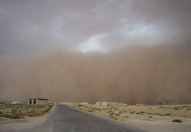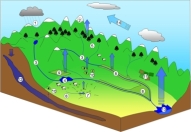Prof. Jason P. Evans
Climate Change Research Centre
University of New South Wales









High-resolution simulation of Jeddah floods using WRF version 3.5.
Deng, L., M.F. McCabe, G. Stenchikov, J.P. Evans and P.A. Kucera
American Geophysical Union Fall Meeting 2013, San Francisco, USA, 9-13 December 2013. Abstract
Modeling flash flooding is a difficult but crucial task for arid environments, as the precursor intense rainfall events that cause these flood responses are often poorly simulated and forecasted. Jeddah, the second largest city in the Kingdom of Saudi Arabia, has suffered from a number of flash floods after short-intense rainfall events over the last decade. Our project is focused on four historic Jeddah flash floods (e.g., November 25th 2009) to investigate the feasibility of real time forecasting of flash flood and achieve a more realistic simulation of the flood-producing rainfall events. The Weather Research and Forecasting (WRF) model (version 3.5) is used to simulate precipitation and meteorological conditions with a high-resolution inner domain (1-km) around Jeddah: different convective
closure and microphysics parameterization, and high-resolution (4-kms) sea surface temperature will be involved. With the comparisons between the model output and station, satellite and radar data, the mechanism of the extreme rainfall events will be discussed and the ability of the WRF model to accurately forecast these rainstorms will be evaluated. Additionally, a unique high spatial (~2-kms) and temporal (5-minutes) resolution radar rainfall data will be used to add value to the understanding of the convective systems responsible for the Jeddah flood.
|
|